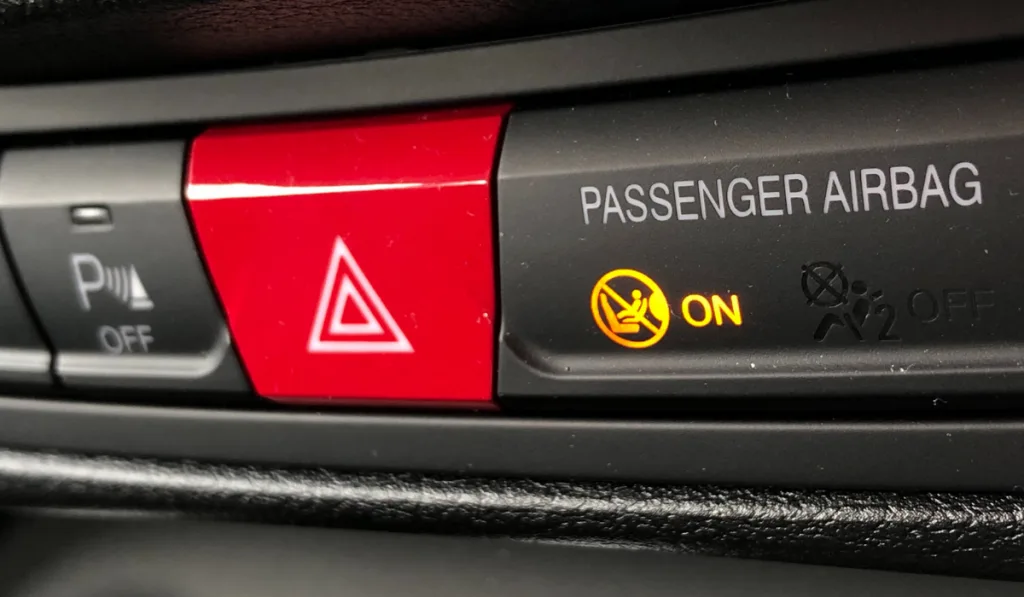In the United States, it is a road safety requirement for vehicles to have airbags for both the driver and the passenger. Some manufacturers provide the basic requirements, while others go overboard to offer more than just the basic requirements.
Do semitrucks have airbags?
Semitrucks aren’t required to have airbags. Compared to other vehicles, semitrucks tend to move much slower, and the truck’s design is such that the driver receives less impact in a collision than smaller vehicles.
How do airbags work? Are there exceptions for certain vehicles using airbags? I will help you answer the above questions in this article and more.
How Do Airbags Work?
Airbags are bags that inflate when the vehicle senses a collision or a crash. They are designed to activate at the immediate time of need.
Airbags are deployed by a system consisting of a control unit and sensors.

The sensors are configured with predetermined conditions and placed at strategic positions likely to be affected in case of a crash or any other incident. Sensors can be fitted at positions that feed data to the vehicle, such as the wheel-speed sensors and accelerometers.
The respective sensor sends a signal to the control module, which, in turn, activates the airbags.
The airbags are equipped with chemicals that rapidly react when activated by the control unit and fill up the airbag with nitrogen gas within 30 milliseconds.
Airbags are securely packaged in the dashboards, seat, steering wheel, and any other safe space that will give you protection in case of a crash.
However, once deployed, airbags are not reusable and require replacement.
Although airbags are good, some drivers may feel different. If a vehicle includes the option of deactivating the airbags, the deactivation adjustments are usually made close to the passenger’s side of the dash.
However, it can be a little complicated to go about the necessary adjustments, and the wrong pattern might lead to the airbag deploying.
Therefore, if you are not certain, it is best to let a professional handle the deactivation.
Why Semitrucks Aren’t Required to Have Airbags
Airbags became a mandatory road safety measure with the Intermodal Surface Transportation Efficiency Act of 1991, which sought to reduce the number of injuries and deaths due to road crashes.
However, this act doesn’t apply to semitrucks.

Why doesn’t the act apply to semitrucks?
The only justification for this is in a case of a crash between a semitruck and a smaller vehicle where the driver’s cab of a semitruck doesn’t receive as much impact as the other car involved.
However, in the event of a crash between two semitrucks, the size and height of the two vehicles only worsen the effect of the impact.
Airbags might not wholly prevent injuries, but they may help check their severity.
Although airbags are not required for trucks, some automakers go out of their way and fit them in the semitrucks anyway.
What Is the Function of an Airbag?
In case of a crash, airbags are designed to lower the risk of severe injury or death, keep the occupants from colliding with parts of the vehicle, and prevent them from falling out of the vehicle.
The risks described above are more common in passenger cars than semitrucks.
For a fact, numerous lives are saved by the mere presence of an airbag, yet when it comes to semitrucks, the life-saving feature is seldom found on today’s machines.
Airbags are not fitted in semitrucks unless you ask for your truck to be customized and equipped with airbags.
There is always a need to secure the driver’s safety and the passengers’, hence the need for an airbag.
However, although they are highly praised, there have been instances where a driver or a passenger involved in a crash was either injured or killed by an airbag.

What Are Truck Manufacturers Doing to Improve Truck Safety?
Over the last decade, there has been a crisis in the truck industry with the shortage of truck drivers, which has translated to stricter driver deadlines. This often leads to extended hours on the road and speeding or driving when tired.
Trucking companies and manufacturers are tirelessly working on automated systems that will help truck drivers better focus on the roads with an assurance of safety.
Truck companies are incorporating sensors and cameras and improving the truck’s braking system to improve the truck’s safety while on the road.
What features do these systems have?
- Blind-spot monitors
- Forward video monitors
- Air-disc brakes and automatic braking systems
- Electronic stability control
- Smart cruise control
Then there is “fused technology,” which allows the truck to intervene when the system detects objects.
This fused technology employs both sensory radars and cameras and boosts the braking ability and the truck’s performance, as well as the detection of pedestrians and vehicles.
Furthermore, safety systems have guided the development of Advanced Driver Assistance Systems (ADAS).
Common features of ADAS include:
- Adaptive Cruise Control monitors and actively adjusts the distance between the truck and other vehicles.
- Automatic headlights, high beams, and wiper blades automatically switch on and adapt to light and weather conditions.
- Active steering makes minor adjustments to the steering wheel at slow speeds so the driver doesn’t have to do all the work.
- Lane assistance also makes minor steering adjustments to help keep the semitruck in the relative lane with less effort from the driver.
New Safety Systems for Trucks

Here are some new safety systems for semitrucks:
- Forward–collision mitigation systems that use cruise control and automatic braking.
- Collision avoidance systems that give prior warning to the driver.
- Lane departure systems that give prior warning to the driver.
- Vehicle-to-vehicle technology notifies vehicles when they drive too close to each other.
Tubular Airbags
Freightliner is introducing dash-mounted and tubular airbags in their semitruck models.
However, since most fatal accidents involve trucks rolling over, and injuries often occur as a result of the driver’s head banging on the interior, the dash-mounted airbags might not be of much significance. The tubular side airbag proves to be of much more importance.
Tubular airbags will cushion the driver’s head whenever a crash that forces the truck to roll over occurs.
Reasons Trucking Companies Don’t Upgrade Their Trucks
The rate of adoption and assimilation of new truck technologies in most trucking companies is still significantly low.
As a reason for the low adoption rates, most companies cite the high expenses associated with the new technology.
Ideally, acquiring new trucks with the necessary technological upgrades is more expensive. Most trucking companies would prefer upgrading the already in-use trucks.
Unlike the high cost of these advanced individual trucks, an old semi-truck can be fitted with lane-departure warning systems or a collision-avoidance warning system for less than $1,000.
Another hindrance to the necessary upgrades of the trucks could be the truck drivers themselves.
Most of the truck drivers have been in the industry for quite a while and may just like their trucks the way they are.
Besides, they might occasionally drive smaller cars with these advanced systems, and maybe they do not like them and would not want their truck to have such systems.
If the trucking companies do not get any pressure to install the systems from their drivers, they won’t have to install them.
However, truckers should consider installing these advanced systems as a long-term investment since it is responsible for avoiding major accidents.

Reasons Trucking Companies Should Upgrade
Before dismissing these technological advancements, truck fleets should consider some facts concerning these systems.
- First, with the data from these systems, insurance providers can consider lowering the insurance premium rates because of the assured safety.
- Second, the functionalities of these systems could also form the recruitment base for efficient drivers and a tool for driver retention. Through practical training, drivers should understand the functionalities of these systems to help improve their working conditions.
- Lastly, if these systems were to be adopted, there would be a significant drop in the truck maintenance costs and the fatalities or injuries recorded. Safety managers and fleet owners should actively know what is on the market for them to upgrade their trucks and, as a result, avoid high future maintenance costs.
Conclusion
Airbags are not mandatory for semitrucks but are required in almost every car in case of a crash. Airbags are effective in avoiding injuries in case of collisions.
Since semitrucks are not required by law to have airbags installed, most do not have them.
Resources
- https://moviecultists.com/do-freightliner-trucks-have-airbags
- https://bigrigpros.com/do-semi-trucks-have-airbags
- https://www.change.org/p/united-states-department-of-transportation-require-all-commercial-vehicles-to-have-airbags
- https://www.motorbiscuit.com/why-you-absolutely-need-airbags-in-trucks/
- https://blog.bigroad.com/blog/how-trucking-manufacturers-are-improving-safety
- https://www.ttnews.com/articles/airbags-save-lives-trucks-too
- https://www.refrigeratedtransporter.com/archive/article/21707584/freightliner-introduces-side-airbag
- https://www.lifewire.com/what-are-airbags-534821
- https://www.fleetowner.com/safety/article/21135141/the-future-of-truck-safety-systems
- https://www.pksd.com/blog/commercial-trucks-and-new-safety-features.html
